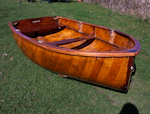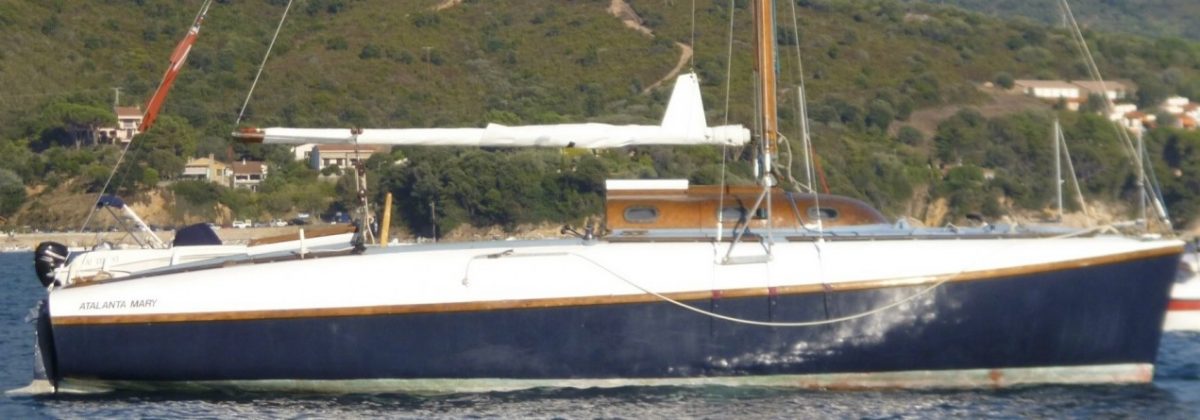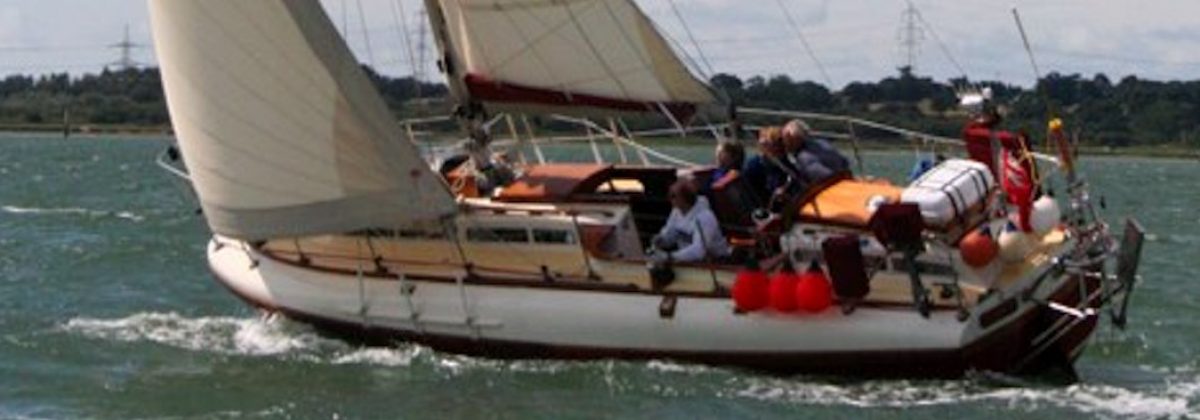Fairey Marine Yacht designs were a result of the Fairey Aviation Company seeking peacetime outlets for its skills and expertise. In 1946, With extensive premises on the waterside at Hamble, Sir Richard Fairey started the Fairey Marine Company to produce wooden boat hulls by a hot moulding technique previously developed for wooden aircraft. An obvious market was the increasing demand for pleasure craft.
Alan Vines and Charles Currey of Fairey Marine had a strong vision of light, seaworthy and practical yachts with room for all of the family, able to explore shallow creeks and rivers, the coast and ‘go foreign’. Alan, then with Fairey Aviation, had ‘prototyped’ many of these concepts in 1952 with his 22′, twin dagger-plate, ‘Sujanwiz‘, a stretched and widened Swordfish hull. Working with the Fairey Marine design consultant Uffa Fox, Alan and Charles developed the 24’ twin lifting keel Atalanta A1 to refine the concepts. She attracted great interest and they settled on the Atalanta 26 design with greater internal space. From its production launch in 1956 the Atalanta 26 proved immediately popular. In 1958 they developed the 20′ Fulmar using many of the same design principle and just one of the keels. In 1959 they extended the freeboard and coachroof of the Atalanta to create the more roomy Titania, and the concept was further expanded in 1961 with a 31′ development of the Atalanta.
That Fairey Marine yacht designs met their vision for the yachts is amply illustrated by the many stories of ocean voyages, long trailer journeys and family coastal and river sailing. Read some examples of notable journeys which demonstrate the boats’ versatility.
Read about the designs and how to get the best from the boats. Each class page includes design information and practical guidance and links to the Class Registers (including history pages for each boat), Indexes of available drawings and other practical information.
And if you are interested in having a sail why not use the Contact Form and we will put you in touch with an owner, or better still have a look at the ‘Boats for Sale’ page and buy your own.
Fairey Atalanta 26 Design

An innovative, versatile and popular yacht in the late 1950s. Fairey Aircraft hot-moulding techniques enabled Fairey Marine to build large numbers of the strong and durable boats. These techniques also led to the Atalanta’s distinctive ‘everything curved’ shape.
With a hull form developed from the likes of the Firefly and Albacore the concept was a light, trailerable yacht capable of family cruising and offshore passages. These capabilities have been proven time and again. 26′ and 4+ berths in a boat weighing around 2 tonnes. The centre cockpit provides extensive safe room for six and keeps weight amidships when sailing.
Originally sold with 3/4 rig a masthead option was later added. Slightly under-canvassed sailing performance is adequate in light airs and the boats come into themselves when the wind pipes up.
Fairey Titania Design

The Titania shares the same underwater lines, keels and spars of the Atalanta. The primary differences are increased freeboard forward, shortened cockpit and lengthened ‘bubble’ (coachroof). These combine to give significantly more space below including 6’2″ headroom forward. The Titania was also fitted with a larger engine and larger fuel tanks.
Fairey Fulmar Design

There was demand for a smaller and cheaper yacht than the Atalanta and in 1958 Fairey Marine built the first of over 60 Fulmars.At only 20′ long the full-bodied Fulmar hull offers 4 berths. The rounded ‘bubble’ coachroof and the single lifting keel were borrowed from the Atalanta.
Fairey Atalanta 31 Design

The success of the Atalanta inevitably led to demand for a larger boat. Fairey Marine’s Alan Burnard drew the lines for the 31 using the same principles and layout as the Atalanta.The boat has a roomy centre cockpit and utilise the Whipstaff tiller. The twin keels adopt the same mechanisms but are larger and fitted as standard with hydraulic lifts. Rather than the hinged rudder of the 26 the rudder lifts vertically, simplifying stern-to mooring.The additional length provides significantly more space below to include hanging lockers, a larger forepeak for the sea toilet and sails, and more comfort in the aft cabin.
Fairey Fisherman Design

Fairey Marine had a hull design they used for lifeboats and this was developed into a motor-sailer. The high volume hull and relatively small rig places greater reliance on the engine. The engines are typically larger than on the other yachts.
Fairey Tenders Designs

To go with the yachts and motor boats Fairey Marine designed and built three dinghies – the Dinky, Duckling and Pixie.
The dinghies were built using the same hot-moulded construction and can look not unlike an inverted ‘blister’ of the Atalanta 26/Titania coachroof.




